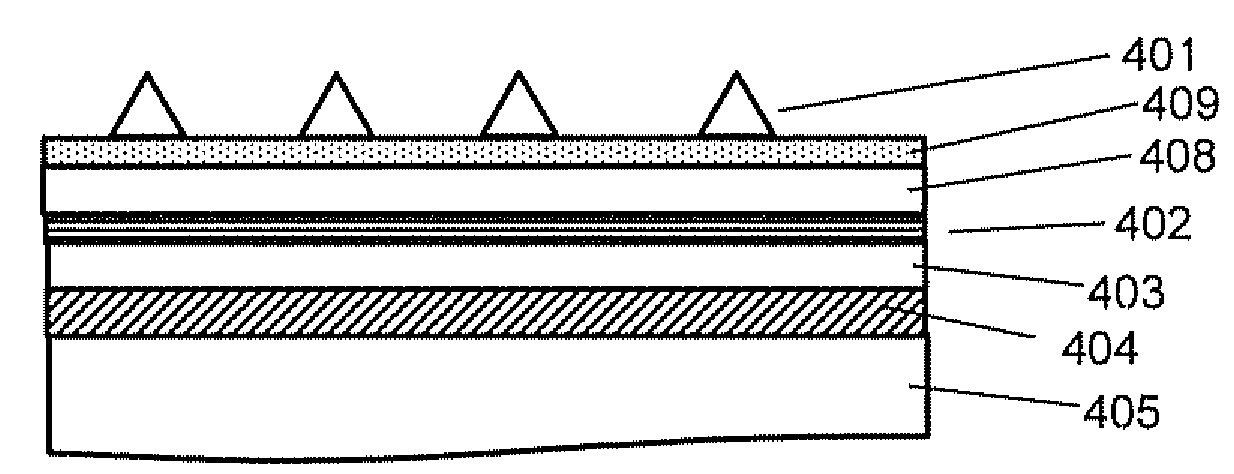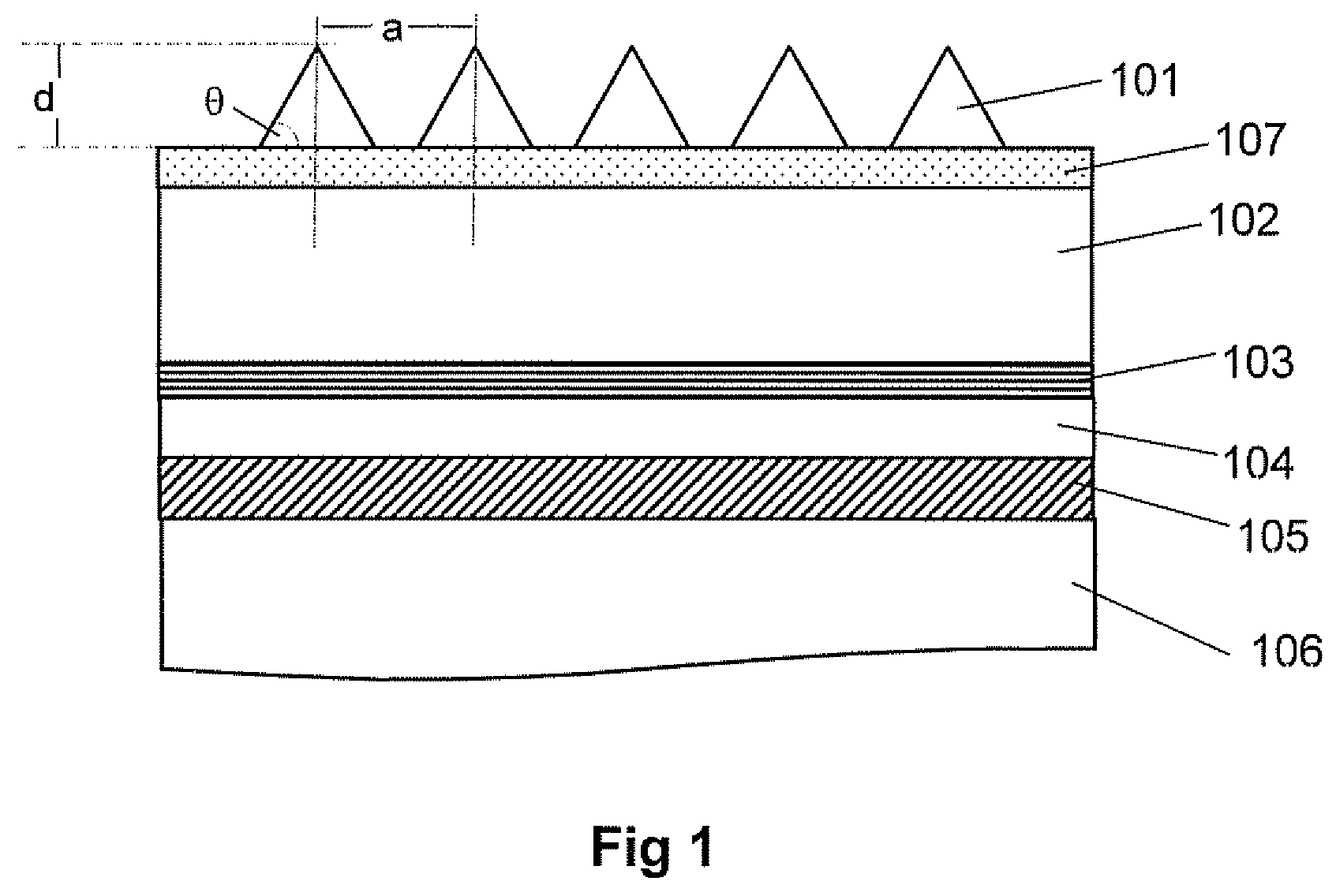Pyramidal photonic crystal light emitting device
a photonic crystal and light-emitting device technology, applied in the direction of semiconductor devices, basic electric elements, electrical equipment, etc., can solve the problems of poor colour gamut, high voltage requirements, environmental recycling and manufacture, etc., and achieve the effect of low cost and greater uniformity and repeatability of fabrication methods
- Summary
- Abstract
- Description
- Claims
- Application Information
AI Technical Summary
Benefits of technology
Problems solved by technology
Method used
Image
Examples
Embodiment Construction
[0069]An aim of the present invention is to provide improved light extraction as well as tailored far-field emission from light emitting devices. These devices can employ a wide range of light emitting semiconductor material system including, but not restricted to, InGaN, InGaP, InGaAs, InP, or ZnO. The description will focus on the implementation of the directional light extraction technique implemented in green InGaN light emitting devices. However, the design can be equally optimised and implemented for other emission wavelengths (such as blue or UV) using this material as well as for other material systems, such as InGaP which is suitable for red and yellow wavelengths.
[0070]In a preferred implementation of the invention a novel high-order pyramidal photonic crystal (PC) or quasicrystal pattern is proposed that provides increased light extraction, as compared to first-order photonic crystal patterns. The PC design also allows for the tailoring of the far-field light distribution...
PUM
 Login to View More
Login to View More Abstract
Description
Claims
Application Information
 Login to View More
Login to View More - R&D
- Intellectual Property
- Life Sciences
- Materials
- Tech Scout
- Unparalleled Data Quality
- Higher Quality Content
- 60% Fewer Hallucinations
Browse by: Latest US Patents, China's latest patents, Technical Efficacy Thesaurus, Application Domain, Technology Topic, Popular Technical Reports.
© 2025 PatSnap. All rights reserved.Legal|Privacy policy|Modern Slavery Act Transparency Statement|Sitemap|About US| Contact US: help@patsnap.com



